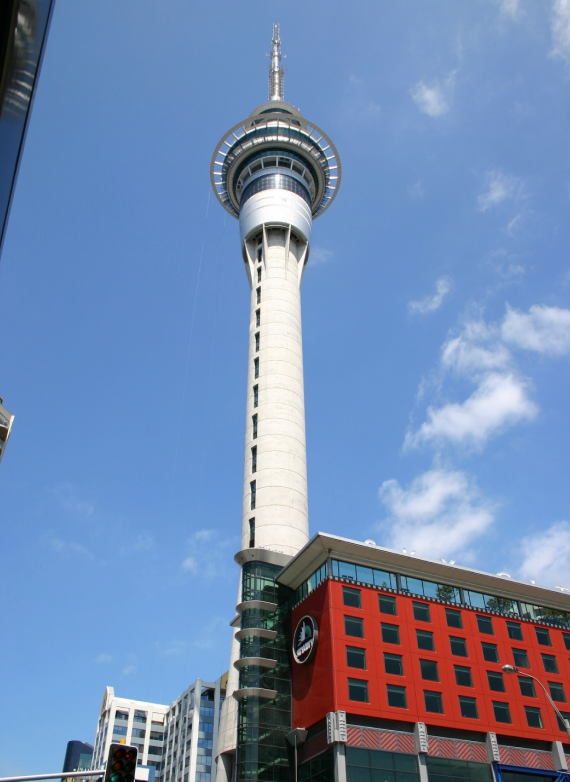Industries
With a deep understanding of local conditions, we tackle complex issues from multiple perspectives to deliver innovative solutions
Industries
Energy
Providing advice and forecasts in the area of energy sector investment

We provide expert advice on energy. Principal economics are experts in the field of energy economics with experience in developing and adopting economic models assessing energy issues in New Zealand.
Environment
Fundamental uncertainty in the future climate requires new ways of planning

We offer a comprehensive range of services to support our clients in navigating the complex landscape of climate change and environmental issues. Our team of experts are experienced in conducting literature reviews, policy assessments, and decision making under conditions of fundamental uncertainty
Housing
Housing depends on a range of factors, including affordability, location of jobs and preferences

Our team at Principal Economics encompass a unique combination of knowledge, experience, and skills suited for solving spatial and urban development and housing issues.
Infrastructure
Robust economic frameworks and empirical methods, informed by evidence, shaped in collaboration with stakeholders.

We assist our clients in identifying the primary and secondary impacts of infrastructure investments.
Tourism
Valuing the direct and indirect benefits and costs of tourism

We have used different data sets alongside with our tourism modelling capabilities for evaluating the impact of a range of investments and policy initiatives in the tourism sector.
Regulatory Economics
Transport
Accessibility is the potential for interaction with locations dispersed over space

Our team currently lead some of the most important transport policy topics. This includes providing expert advice on transport equity, emission reduction policies and decision making under deep uncertainty.
Capabilities
Our innovative solutions are tailored carefully to the questions at hand
Capabilities
Economic impact analysis

Making decisions in uncertain times needs precise understanding of the costs and benefits. We can assist by identifying fiscal, economic and wellbeing benefits from your investment decision or policy intervention.
Economic research

Making decisions in uncertain times needs precise understanding of the costs and benefits. We can assist by identifying fiscal, economic and wellbeing benefits from your investment decision or policy intervention.
Market analysis

Making decisions in uncertain times needs precise understanding of the costs and benefits. We can assist by identifying fiscal, economic and wellbeing benefits from your investment decision or policy intervention.
Macroeconomic consulting

In the rapidly changing global economy, it is increasingly essential to have a comprehensive understanding of macroeconomic dynamics and conduct a robust analysis of the economic environment to make informed strategic decisions.
Cost benefit analysis

Making decisions in uncertain times needs precise understanding of the costs and benefits. We can assist by identifying fiscal, economic and wellbeing benefits from your investment decision or policy intervention.
Forecasting and modelling

Making decisions in uncertain times needs precise understanding of the costs and benefits. We can assist by identifying fiscal, economic and wellbeing benefits from your investment decision or policy intervention.
Spatial analysis and modelling

In the rapidly changing global economy, it is increasingly essential to have a comprehensive understanding of macroeconomic dynamics and conduct a robust analysis of the economic environment to make informed strategic decisions.
Business case approach

Our team have led business cases for a range of sensitive topics.
About Us
Our consultancy services are driven by the questions of clients, informed by robust evidence, shaped in collaboration with stakeholders, rooted in multi-deciplinary approaches and guided by principles of Economics.
About Us
Our purpose, mission and values

Our purpose, mission, and values guide our actions and aspirations. We are dedicated to driving positive change, delivering innovative solutions, and upholding the highest standards of professionalism. By adhering to these principles, we aim to make a lasting impact and contribute to the betterment of society.
Our Corporate Commitments

At Principal Economics, we are dedicated to making a positive impact on society and delivering value to our clients through our unwavering commitment to excellence and responsible business practices. As an economics consulting firm, we recognize the importance of addressing the pressing challenges of our time and striving for inclusive growth, community engagement, diversity and inclusion, ethics and integrity, health and safety, as well as sustainability.
How We Work
Exceptional People and Culture

At Principal Economics, our approach to work is driven by a commitment to excellence, collaboration, and client-centricity. We leverage our expertise, draw inspiration from industry-leading organisations, and continuously refine our practices to ensure we deliver exceptional results. Here's an overview of how we work:
Publications
Our reports offer inspiring and independent insights into various topical issues
Knowledge Hub
Here we provide frontier knowledge and data collected from our latest reports and analyses
Articles
Our articles challenge the status quo by reframing current issues, sparking fresh conversations and finding new solutions
Publications
Knowledge Hub
Articles
Economic Impact of New Zealand's Second Emission Reduction Plan
CGE modelling of ERP2

This report uses CGE modelling to estimate GDP, employment and distributional impacts of the Emissions Reduction Plan 2 (ERP2), which delineates Aotearoa New Zealand's strategy to attain its emissions reduction objectives for the 2026-2030 period, alongside setting a path towards achieving long-term emissions reduction objectives.
Climate change adaptation and investment decision making

Aotearoa New Zealand suffers from an infrastructure deficit. Without the key infrastructure needed now for our economy to thrive, we deprive future generations from significant economic prosperity.
Review of Housing and Business Development Capacity Assessments

The Ministry for the Environment (MfE) appointed Principal Economics to review the Housing and Business Development Capacity Assessments HBAs). Our review included all councils’ HBAs, except for Rotorua and Wellington, which were not available at the time of this review.
Incorporating distributional impacts (equity) into the CBA framework

Transportation decisions can have large and varied impacts on travellers and their communities. It’s important to measure these effects and consider their impact on various groups when planning projects.
Business Development Capacity Assessment for Dunedin City

Dunedin City Council appointed Principal Economics to provide a comprehensive assessment of the sufficiency in development capacity of business land within Dunedin to fulfils requirements of the the National Policy Statement on Urban Development
See all Publications

Read inspiring publications that challenge conventional thinking by reframing current issues, igniting fresh conversations, and discovering innovative solutions.
Emission reduction initiatives

We provide a comprehensive summary of potential policy areas suitable for emissions reduction. This inludes a review of policy areas including active transport, mobility as a service, ridesharing, telework, parking pricing, road user pricing, carbon taxes and more.
Drivers of House Price Growth

We provide an extensive review and test the factors of housing price growth in New Zealand. We assessed the level of agreement and certainty with the source of house price growth over the last fifty years.
See All Knowledge Hub
Transport equity
See All Articles
Contact Us
Our team
Dr Eilya Torshizian

Eilya is the Director of Principal Economics. Eilya brings to the projects a unique combination of knowledge, experience, strong leadership and management skills. Eilya is experienced in managing large teams of applied researchers and has led a wide range of high-profile infrastructure projects in New Zealand.
Eugene Isack

Eugene has over a decade experience in the economics and planning consulting and is experienced in data analysis and transport and economic modelling, with specialised skills in geographic information systems (GIS), big data analysis, and is a registered Statistics IDI researcher.
Alina Fehling

Alina is experienced in data analysis and is interested in welfare, inequality and trade topics.
Ruyi Jia

Ruyi is specialised in economic modelling and data analysis, with a keen interest in advancing the energy sector in New Zealand.
Phil Donovan

Phil has over a decade consulting experience in the areas of transport, planning and economics. He is experienced in data analysis and a range of modelling, with specialised skills in programming and reproducible analysis with tools such as R, Python, SQL, Git(Hub), Docker, big data.
Prof. Robert MacCulloch

Robert MacCulloch holds the Matthew S. Abel Chair of Macroeconomics at Auckland University. He is a native of New Zealand and working at the Reserve Bank of New Zealand before completing his PhD in Economics at Oxford University in the UK.
Affordable offshore wind will accelerate our clean electricity future

Publication test name
Offshore renewable energy is an option that is being considered as contributing to Aotearoa New Zealand’s goal of reach net-zero for long-lived gases by 2050. The government has set a target that 50 per cent of total energy consumption will come from renewable sources by 2035, with an aspirational target of 100 per cent renewable electricity by 2030 (MBIE, 2022). Beyond providing a more stable, constant, and predictable energy generation, offshore renewable energy has a high potential for contributing additional economic benefits throughout its lifecycle. By 2035 electricity generated by wind power (including that from the OWI) is expected to contribute 25.6% of total electricity supply (Calculating NZ’s Renewable Electricity Gap, 2021).
Electricity’s share of final energy consumption is set to grow. Having increased from 15% in 2000 to 24% today, the final consumption of electricity has increased by 41.6% between 1990 and 2020 (IEA, 2020).[1] To meet anticipated demand in New Zealand, each year from 2025 renewable electricity generation that can supply over 1 TWh per year will need to be built. Renewable electricity will be critical in decarbonising the broader New Zealand energy system substituting current fossil fuel use. New generation facilities will need to be built rapidly to meet rising electricity demand. Increasing wind and solar power generation can lower the yearly duration when fossil fuel generation is necessary while, flexible gas and hydro generation can offer support during periods of intermittent energy supply.
The potential for offshore wind in New Zealand is significant, with Ishwar & Mason (2019) identifying at least 7GW of potential capacity from fixed foundations wind turbines in South Taranaki alone, with additional capacity from floating turbines and other locations. Other notable locations with wind capacity in New Zealand include Waikato and Southland. However, barriers related to consenting and investment certainty must be removed for this generation’s potential to be realised and build delays will both directly and indirectly impact emissions (Climate Change Commission, 2023; Principal Economics, 2021).
Securing the advantage of offshore wind energy will require new policies and significant investments from public and private sectors across the supply chain. A wide-scale rollout of offshore wind turbines has challenges, including ensuring the availability of ports, ships, and turbine components including blades and nacelles. Further hurdles include scarce transmission interconnection points and pinpointing appropriate sites for turbines, ports, and production plants.
Renewable electricity will play a key role in decarbonising the wider energy system. New generation will need to be built rapidly to meet an increase in electricity demand. However, building new renewable generation, such as hydropower, wind and geothermal, can be at odds with other outcomes, such as protecting and restoring waterways and Iwi/Māori rights and interests. Overall, the climate commission’s report suggests that the transition to a low-emissions society will lower the level of GDP by 0.5% lower in 2035 and by 1.2% lower in 2050 than it would be otherwise.[2] This reduction in GDP (compared to the 2050 level) will have implications for electricity demand and supply. Also, as highlighted in the climate commission report, ‘investing in low emissions technologies and practices now will open up new opportunities and reduce the risk of damaging the country’s reputation due to a lack of credible climate action. However, delaying key actions like the move to EVs and embedding more efficient farm practices could result in the level of GDP in 2050 falling by around 2.3%.’ (Climate Change Commission, 2021, p. 14)
[1] Statistics available here.
[2] Under current policy settings, GDP is projected to grow to $388 billion by 2035 and $487 billion by 2050. Whereas meeting our recommended emissions budgets through the demonstration path would result in GDP growing to about $386 billion by 2035 and would put Aotearoa on track for GDP to grow to $481 billion by 2050.
